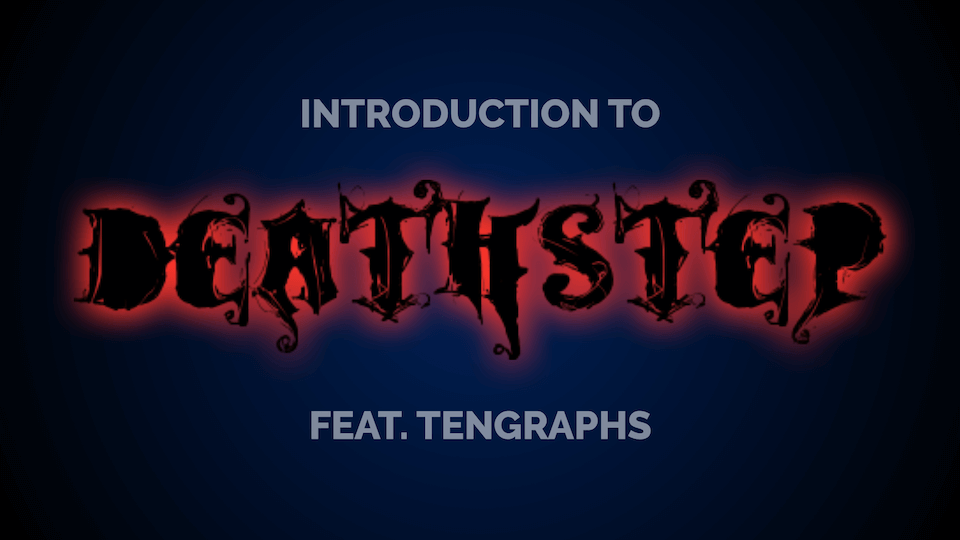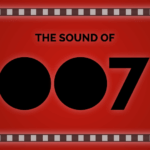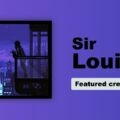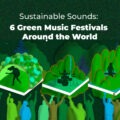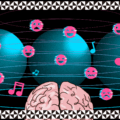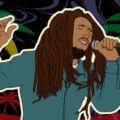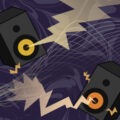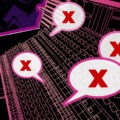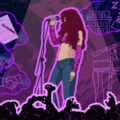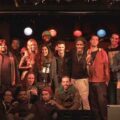Deathstep artist TenGraphs reflects that the genre “is very dark, aggressive, visceral. It comes from emotions of anger, fear, and hatred. It embodies those emotions with very harsh tonalities and brutal arrangements.” In other words, deathstep is the emotional exorcism you didn’t know you longed for, filled with precise and hard-hitting sound designs aimed at drawing out your dormant demons.
The formal beginnings of this niche, community-based genre can be traced back to the early 2010s. Deathstep was pioneered by a combination of death metal’s thrashy, fiery, and dark melodies, and dubstep’s pulsating bass and beat drops. Early on in the scene, artists like Bratkilla, Static: Reset, Mantis, Broken Note, Sinister Souls, Balkansky, and Moth were the main pioneers who shaped the deathstep sound. Since then, sonic storytelling using horror and orchestral sounds has been at the forefront of this ever-evolving genre.
We recently sat down with former RAC instructor Marc Distexhe (aka TenGraphs), who walked us through some of the highlights of the genre. Marc is a prominent deathstep artist who co-owns the influential deathstep record label Crowsnest Audio alongside Code: Pandorum.
TenGraphs · TenGraphs & MurDa – Fractured (CLIP) [OUT NOW]
Boundary-Pushing Energy
Deathstep’s unapologetic nature was one of the initial draws of the genre for Marc.“What was most attractive to me about deathstep was the energy and aggression behind the sound. Writing deathstep is a lot of playing around with distortion, granular synths, weird textures, audio manipulation, and shaping it into an epic, making the story come to life with the rawest of sounds.”
This same high-energy workflow has helped deathstep stay fresh. “So much experimentation goes into the process, and it really keeps the genre as a boundary pusher,” says Marc. “What excites me most is the potential for innovation.”
Deathstep owes much of its energetic and rebellious ethos to its death metal and dubstep predecessors. “The (deathstep) sound started off as very dark, noisy, metal-influenced bass music, and it was very raw, uncontrolled,” says Marc. “Deathstep tends to grab the energy of the genres it roots from, but it blends them in a unique, more visceral sound that has become its own thing.”
The Importance of Death Metal for Deathstep
The first of those “genre roots” that Marc is referring to is death metal, which itself was a child of heavy metal. The seeds of death metal were planted by various artists in Florida’s flourishing heavy metal scene during the early 1980s, including Mantas. This Orlando-founded group released their first demo titled Death By Metal in 1984, and they quickly became one of the prototypical death metal acts to make international noise. Later, the band was renamed Death, marrying the ideas of ‘death’ and ‘metal’.
Death’s championed sound brought some shocking changes to metal. With evil, rumbling roars, lyrical carnage, and aggressive thrash-style guitar, the new death metal sound was all about being more extreme than the rest. Death metal bands were trying to play faster than everyone else, growl lower, and use more extreme distortion. Low-tuned guitars, palm muting, and tremolo picking techniques also helped musicians to show off their finesse.
By the early 1990s, Tampa, Florida was the hotspot for death metal. Unlike major music scenes that blossomed in big cities like New York, Los Angeles, and London, this was a more local and slow-burning development. It consisted of kids practicing in their parents’ houses, garages, and rented storage sheds to hone their skills and perform wherever they could manage. The death metal genre was culturally associated with violent acts of brutality, and many clubs refused to book artists until they grew in popularity. Often, shows had to make due with backyards and community centres.
Dubstep Enters the Game
The other major influence of note for deathstep is dubstep. Dubstep began as an offshoot of UK garage in late 1990s South London. The electronic dance genre’s sound was characterized by syncopated rhythmic patterns with prominent sub-bass frequencies mixed with grime and reggae. Early dubstep tracks featured multiple ‘bass drops,’ a characteristic lifted right from drum and bass music. DJ John Peel began playing dubstep on BBC Radio 1 in 2003 and soon after it started to spread to smaller local scenes. Skream, an English electronic musician, took a liking to the genre, becoming an early and influential figure in the scene.
Dubstep’s emergence coincided with the rise of Web 2.0, a time when the World Wide Web was growing into a more interactive destination filled with more user-generated content. The dubstep genre proliferated with the help of new, globally-reaching online blogs and fan communities. Remixes from producers further led to dubstep’s popularity stateside.
As the genre fully hit the United States mainstream around the late 2000s, related subgenres also began popping up around dubstep. One notable example is the work of Skrillex. This producer upped the dubstep ante to create the brostep sound. He mixed heavier metal and drums with new melody, drops, and sampling arrangements to create tracks that were both social party bangers and electronically-inclined nerd anthems.
The Emergence of Deathstep
The 2010s saw a decline of brostep, giving deathstep the opportunity to establish itself as a standalone genre. In 2011 Bratkilla formally coined the deathstep term on his The Deathstep LP. Bratkilla’s use of hypnotic repetition, off-kilter and atonal synths, and machine gun basses (heavy rapid synths with short decay in triplets) became the main inspiration for the genre and paved the way for its future.
Rising from the ashes of death metal and dubstep, deathstep transmuted the energy and presentation of its forefathers into something new. It presented a melding of dark, raw, and noisy metal and bass. Its imagery was dark and ominous. Hard-hitting kick drum and frequent electric guitar merged into an unholy union. And of course, making both death metal and dubstep proud: the heavier and more extreme sound, the better.
Where does that leave the deathstep sound today? “It’s definitely progressed to more horror, orchestral, and metal focused sounds, delivered in a more cohesive direction,” says Marc. “I think it’s going to keep evolving in a very dark storytelling direction in the long run.”
“In terms of live shows, we’re talking about theatrics,” Marc adds. “Expect a dark, horrific experience filled with high-intensity music, and high energy. Code: Pandorum is probably the best reflection of what deathstep should be perceived as.”
It Takes a Community to Raise a Genre
Much like its death metal and dubstep roots, deathstep is about more than just music. Fans and artists alike coming together for a common goal of expression and release keep the genre alive and thriving. Marc agrees that community is an important element in keeping the deathstep ecosystem healthy.
“Deathstep comes from a very niche community, so community is a huge thing in the culture. Touring as a deathstep artist is fun because the community is very supportive and people will drive literally a whole day cross-country to catch sets.”
A healthy network of artists also keeps the scene thriving. “Names like Code: Pandorum, Qoiet, Evilwave, Falaris, Superwet, Brain Palace… (and) guys on Crowsnest Audio and Interval Audio are at the forefront of the genre. The main reason behind that is they tend to stay away from what’s been done and keep experimenting with more and more variation of the established sound. So it’s continuously evolving. Never static.”
While deathstep is young in the music world at only around a decade old, it continues to embrace raw sounds and to test musical boundaries that make it seem poised to keep burning brightly. Whatever the future holds, there’s one thing you can count on: it’s going to keep finding new ways to brutalize your eardrums.
